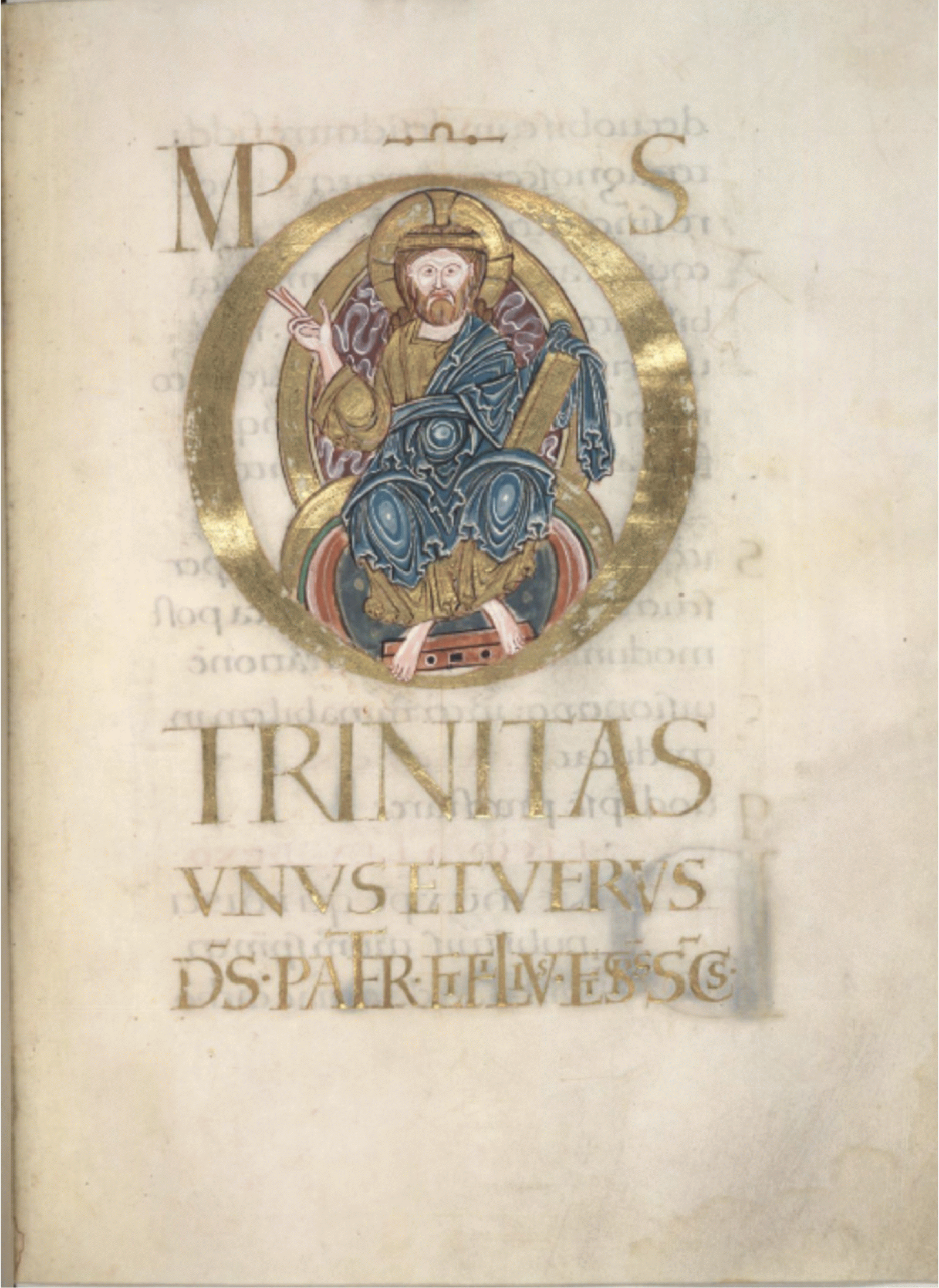Conferenza
Vincent Debiais: Animated Colors: Folds and Fields in the Benedictional of St. Æthelwold

Benedictional of St. Æthelwold (London, British Library, Ms Add 49598), fol. 70 © BL
The paper addresses the presence and meaning of a recurring motif in the paintings of the Benedictional of St. Æthelwold (London, British Library, Ms Add 49598). This motif consists of a white line and its translucent shadow. Repeated throughout the manuscript, this formless element ensures the visibility of an invisible presence in the images, that of the Spirit acting in the world in the same way as it acts when pronouncing the blessings copied in the manuscript. The hypothesis of the talk is that the figuration process of colors in the benedictional responds to the mechanisms of medieval abstraction, and transforms this painted detail, regardless of its apparent insignificance, into the non-mimetic evidence of the Holy Spirit. The focus will lie on the first paintings in the manuscripts representing saints, virgins and confessors, as well as on the following paintings of the Annunciation and Pentecost, and will place them within the context of the content of the dedicatory poem copied at the beginning of the manuscript.
Vincent Debiais (PhD in Medieval History in 2004) is a faculty member at the École des hautes études en sciences sociales in Paris. He has published extensively on medieval epigraphy as the team leader of the Corpus des inscriptions de la France médiévale, between 2004 and 2018, and on the relations between texts and images in medieval art. His books include Messages de pierre. La lecture des inscriptions dans la communication médiévale, Brepols, 2009 ; La croisée des signes, Paris, 2017 ; and Le silence dans l’art. Théologie et liturgie du silence dans les images médiévales, Paris, 2019. He has been invited as visiting professor in the Universities of Reno, Sao Paolo and Tarragona, and has been a fellow at the Institute for Advanced Study in Princeton, and at the Stanford Humanities Center in Stanford University. In his new project, he explores abstract thinking and non-figurative images in the visual culture of the Middle Ages.
The lecture will take place online via Zoom. The registration is free, but mandatory. Please register at the following address: https://zoom.us/meeting/register/tJEvf-itqj8pHt3QmN8sq0P-if6cIWE8d2NX
This talk is part of the Lecture Series "Phenomenon ‘Colour’. Aesthetics – Epistemology – Politics" (organised by Hana Gründler, Franziska Lampe and Katharine Stahlbuhk)
The preoccupation with colour, which in many cultures plays a fundamental role in artistic practice, art history, and art theory, is driven and at the same time complicated by the fact that colour as an optically mediated sensory impression is always determined by subjective factors, such as the respective condition of the perceptual apparatus. However, colour (and its perception) is also dependent on a variety of external physical conditions and is decisively shaped by social and cultural preconditions, as well as linguistic meanings and attributions. Seeing and talking about colour – one of the fundamental tasks of art historians – therefore proves to be a complex process that does not only touch on perceptivity, but is also closely connected to aesthetic, epistemic, ethical and (power-)political questions and problems, and is not least accompanied by (pre-)judgements. This ambiguity – even indeterminacy – of the phenomenon ‘colour’ is a good starting point to grapple with its sometimes divergent characterisations and to question historically rooted attributions and contentious categorisations.
The aim of the lecture series “Phenomenon ‘Colour’. Aesthetics – Epistemology – Politics” is thus to take a critical look at the hierarchies and ideologies associated with colour and to examine what consequences result from the colour schemes, theories and harmonies often determined in the West. The spectrum of questions is broad and may touch upon the following thematic areas: How do we in art history deal with the linguistic limits of describing the phenomenon of colour? How can we talk about colours today, aware of their historical and cultural imprints? How and when do the semantics associated with individual colours change over time? To what extent are colour metaphors and symbolisms instrumentalised nowadays? And as a result: what ethical implications are attributed to certain colours? How and in what form is colour or the lack of it ideologically used and abused? And what are the (power-political) dispositifs in which judgements about colours are made? Or, more fundamentally, why does colour affect us so profoundly?
The lecture series is an additional platform for a critical exchange on the “Phenomenon ‘Colour’”, which will be the subject of a special edition of the journal "kritische berichte" published in spring 2022.
20 settembre 2021, ore 17:00
This event will take place online.
To participate please register in advance via Zoom:
https://zoom.us/meeting/register/tJEvf-itqj8pHt3QmN8sq0P-if6cIWE8d2NX
Avviso
Questo evento viene documentato fotograficamente e/o attraverso riprese video. Qualora non dovesse essere d’accordo con l’utilizzo di immagini in cui potrebbe essere riconoscibile, da parte del Kunsthistorisches Institut in Florenz a scopo di documentazione degli eventi e di pubbliche relazioni (p.e. social media) la preghiamo gentilmente di comunicarcelo.


